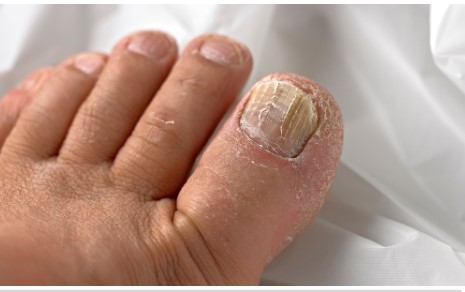Pus under the toenail, often resulting from an infection or injury, can be both uncomfortable and concerning. This condition, which is medically known as paronychia, may be caused by bacteria or fungi and often leads to symptoms such as redness, swelling, and pain. If you find yourself dealing with this issue, you might be wondering about effective home remedies that can help alleviate your symptoms and promote healing. In this article, we’ll explore various home remedies that can assist in managing pus under the toenail and provide some tips on when to seek professional medical treatment.
Understanding the Causes
Before diving into home remedies, it’s important to understand what causes pus under the toenail. Common culprits include:
- Infections: Bacterial or fungal infections can lead to pus accumulation. Bacteria like Staphylococcus aureus are common offenders.
- Injuries: Trauma to the toenail, such as stubbing your toe or dropping something heavy on it, can create an environment ripe for infection.
- Ingrown Toenails: When toenails grow into the surrounding skin, they can cause pain, swelling, and pus.
- Poor Hygiene: Inadequate foot hygiene can lead to fungal and bacterial infections, contributing to pus formation.
Home Remedies for Pus Under the Toenail
If you’re dealing with pus under the toenail, several home remedies might offer relief and assist in the healing process. However, if your symptoms persist or worsen, it’s crucial to consult a healthcare professional.
1. Warm Soaks
One of the simplest and most effective remedies is to soak the affected toe in warm water. The warmth helps to increase blood flow, reduce swelling, and promote healing. You can add Epsom salt or a few drops of antiseptic solutions like hydrogen peroxide or tea tree oil to the water for added benefits. Soak the toe for about 15-20 minutes, 2-3 times a day.
2. Tea Tree Oil
Tea tree oil has natural antibacterial and antifungal properties that can help combat infections. Dilute a few drops of tea tree oil with a carrier oil, such as coconut oil, and apply it to the affected area. Be cautious, as undiluted tea tree oil can be irritating to the skin.
3. Garlic
Garlic is known for its antimicrobial properties. Crush a clove of garlic and mix it with a bit of coconut oil to create a paste. Apply this paste to the infected toenail and cover it with a bandage. Garlic can help to kill bacteria and fungi, reducing pus and promoting healing.
4. Apple Cider Vinegar
Apple cider vinegar (ACV) has both antibacterial and antifungal properties. Dilute ACV with equal parts water and soak your toenail in the solution. Alternatively, you can apply a mixture of ACV and water directly to the affected area with a cotton ball. ACV can help balance the pH of the skin and reduce infection.
5. Honey
Honey, particularly raw or manuka honey, has natural antimicrobial properties. Apply a small amount of honey to the affected toenail and cover it with a clean bandage. Honey helps to keep the area moist, which can promote healing and prevent further infection.
Maintaining Good Foot Hygiene
Proper foot hygiene is crucial in preventing and managing pus under the toenail. Here are some tips:
- Keep Feet Clean and Dry: Wash your feet daily with soap and water, and make sure they are thoroughly dry before putting on socks and shoes.
- Wear Breathable Footwear: Choose shoes made of breathable materials to reduce moisture buildup and prevent fungal infections.
- Trim Toenails Properly: Keep toenails trimmed and avoid cutting them too short, which can lead to ingrown toenails.
When to Seek Professional Help
While home remedies can be effective for mild cases, there are times when you should seek medical attention:
- Persistent or Severe Symptoms: If the pus does not improve with home treatment, or if you experience severe pain or swelling, consult a healthcare professional.
- Signs of Systemic Infection: If you develop a fever, chills, or feel generally unwell, these could be signs that the infection has spread and requires prompt medical attention.
- Underlying Health Conditions: Individuals with diabetes or other chronic health conditions should seek medical advice promptly if they suspect an infection.
How to get rid of toe infection
How to get rid of toe infection: When dealing with a toe infection, it’s essential to combine home remedies with proper medical care. Begin by following the home remedies mentioned above to alleviate symptoms and reduce pus. However, if the infection does not improve, or if you have underlying health concerns, it’s crucial to consult a healthcare provider. They may recommend additional treatments or medications to address the infection effectively.
For those in Scottsdale, AZ, looking for professional help, local resources offer comprehensive care for toe infections. Whether you’re seeking immediate relief or ongoing treatment, finding the right “toe infection treatment in Scottsdale AZ” can make a significant difference in your recovery process.
Conclusion
Pus under the toenail can be a painful and bothersome condition, but several home remedies can help manage symptoms and promote healing. From warm soaks and tea tree oil to garlic and honey, these treatments may provide relief and aid in resolving the infection. However, if you experience severe symptoms or persistent issues, seeking professional medical care is essential. For residents of Scottsdale, AZ, there are specialized “toe infection treatment Scottsdale AZ” options available to ensure you receive the best care for your condition. Always remember to maintain good foot hygiene to prevent future infections and consult a healthcare provider if necessary.



